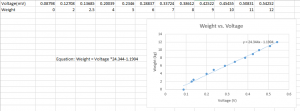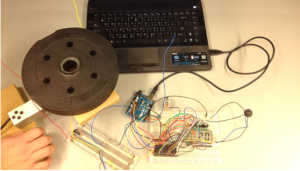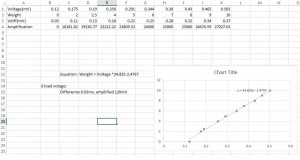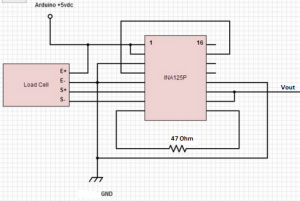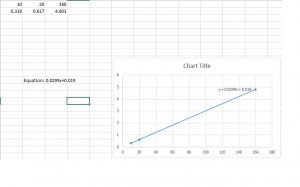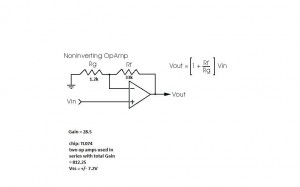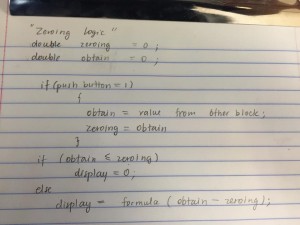On Monday, Nov 24, the team met to make final adjustments to the first prototype before the presentation. In particular, we utilized the temporary base for the load cell that simplified and made the process of weighting more accurate. Additionally, the load cell was calibrated again, i.e. a new equation was generated using the values displayed on the liquid crystal display (LCD) (picture attached). The frequent calibrations of the load cell were expected since it is very sensitive to any environmental changes.
On Tuesday, Nov 25, C.G and N.S were invited to the laboratory room to observe the current progress of the team. In particular, 2, 6 and 10 kilogram (kg) weights were placed on top of the load cell and then the appropriate weight was displayed on the LCD. A snapshot of the first prototype displaying 2 kg is attached. The laboratory presentation was followed by a formal presentation in Kaiser 3056.
For the rest of the week each member of the team worked on writing particular parts of the proposal update:
M.M – Load cell;
M.L – Amplifier;
O.Y – Arduino and LCD;
W.Y – Next steps and overall progress;
M.S – Intro, toggle switch, push button.
In addition, M.S worked on editing and merging the parts of the prototype 1 report.
On Saturday, Nov 29, M.S sent the prototype 1 report and presentation slides to C.G, N.S, E.M and each team member.
Abbreviations: M.S – Maria Serbanescu, O.Y – Oscar Yang, M.L – Michael Li, W.Y – Weng Fey Yu, M.M – Mustafa Mussayev, C.G – Cristian Grecu, N.S – Navid Shafiei, E.M – Eric Molendyk.
